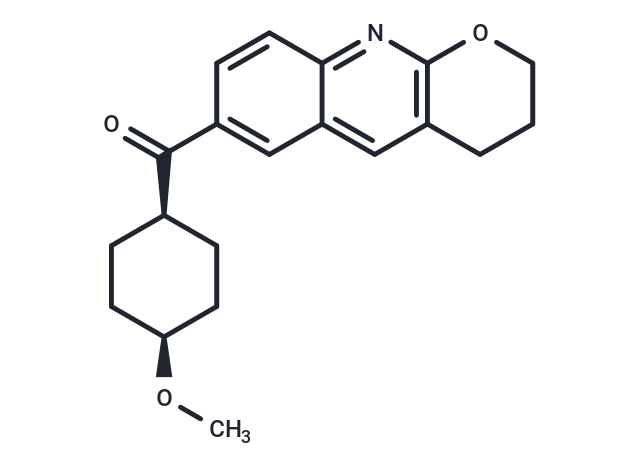Shopping Cart
- Remove All
 Your shopping cart is currently empty
Your shopping cart is currently empty

JNJ16259685 (TN.T 16259685) is a selective mGluR1 antagonist, and inhibits the synaptic activation of mGluR1 in a concentration-dependent manner with IC50 of 19 nM.

| Pack Size | Price | Availability | Quantity |
|---|---|---|---|
| 1 mg | $41 | In Stock | |
| 2 mg | $59 | In Stock | |
| 5 mg | $92 | In Stock | |
| 10 mg | $143 | In Stock | |
| 25 mg | $308 | In Stock | |
| 50 mg | $472 | In Stock | |
| 100 mg | $689 | In Stock | |
| 1 mL x 10 mM (in DMSO) | $102 | In Stock |
| Description | JNJ16259685 (TN.T 16259685) is a selective mGluR1 antagonist, and inhibits the synaptic activation of mGluR1 in a concentration-dependent manner with IC50 of 19 nM. |
| Targets&IC50 | mGluR1:19 nM |
| In vitro | JNJ16259685 non-competitively inhibited glutamate-induced Ca2+ mobilization with IC50 values of 3.24+/-1.00 and 1.21+/-0.53 nM, respectively, while showing a much lower potency at the rat and human mGlu5a receptor.?JNJ16259685 inhibited [3H]1-(3,4-dihydro-2H-pyrano[2,3-b]quinolin-7-yl)-2-phenyl-1-ethanone ([3H]R214127) binding to membranes prepared from cells expressing rat mGlu1a receptors with a Ki of 0.34+/-0.20 nM.?JNJ16259685 showed no agonist, antagonist or positive allosteric activity toward rat mGlu2, -3, -4 or -6 receptors at concentrations up to 10 microM and did not bind to AMPA or NMDA receptors, or to a battery of other neurotransmitter receptors, ion channels and transporters.?In primary cerebellar cultures, JNJ16259685 inhibited glutamate-mediated inositol phosphate production with an IC50 of 1.73+/-0.40 nM.?Subcutaneously administered JNJ16259685 exhibited high potencies in occupying central mGlu1 receptors in the rat cerebellum and thalamus ( ED50=0.040 and 0.014 mg/kg, respectively)[3]. |
| In vivo | JNJ16259685, a selective mGluR1 antagonist (negative allosteric modulator), was tested in assays of motor skill, and motor learning in rats and mice.?JNJ16259685 produced very minimal effects on locomotor activity and posture up to a dose of 30 mg/kg.?Motor skill was unaffected for well-learned tasks (up to 30 mg/kg) in rats, but impaired in mice.?Both rats and mice rats were profoundly impaired (0.3 mg/kg) in the acquisition of a novel motor skill (rotarod).?These results implicate the mGluR1 receptor in the acquisition of novel motor skills.?JNJ16259685 dramatically reduced rearing behavior, exploration of a novel environment and lever pressing for a food reward (rat: 0.3 mg/kg;?mouse: 1 mg/kg).?JNJ16259685 (30 mg/kg) had no effect on reflexive startle responses to loud auditory stimuli or foot shock in mice[1]. |
| Alias | .TN.T 16259685 |
| Molecular Weight | 325.4 |
| Formula | C20H23NO3 |
| Cas No. | 409345-29-5 |
| Smiles | CO[C@H]1CC[C@H](CC1)C(=O)c1ccc2nc3OCCCc3cc2c1 |
| Relative Density. | 1.21g/cm3 |
| Storage | Powder: -20°C for 3 years | In solvent: -80°C for 1 year | Shipping with blue ice. | |||||||||||||||||||||||||||||||||||
| Solubility Information | DMSO: 100 mg/mL (307.31 mM), Sonication is recommended. | |||||||||||||||||||||||||||||||||||
Solution Preparation Table | ||||||||||||||||||||||||||||||||||||
DMSO
| ||||||||||||||||||||||||||||||||||||

Copyright © 2015-2025 TargetMol Chemicals Inc. All Rights Reserved.